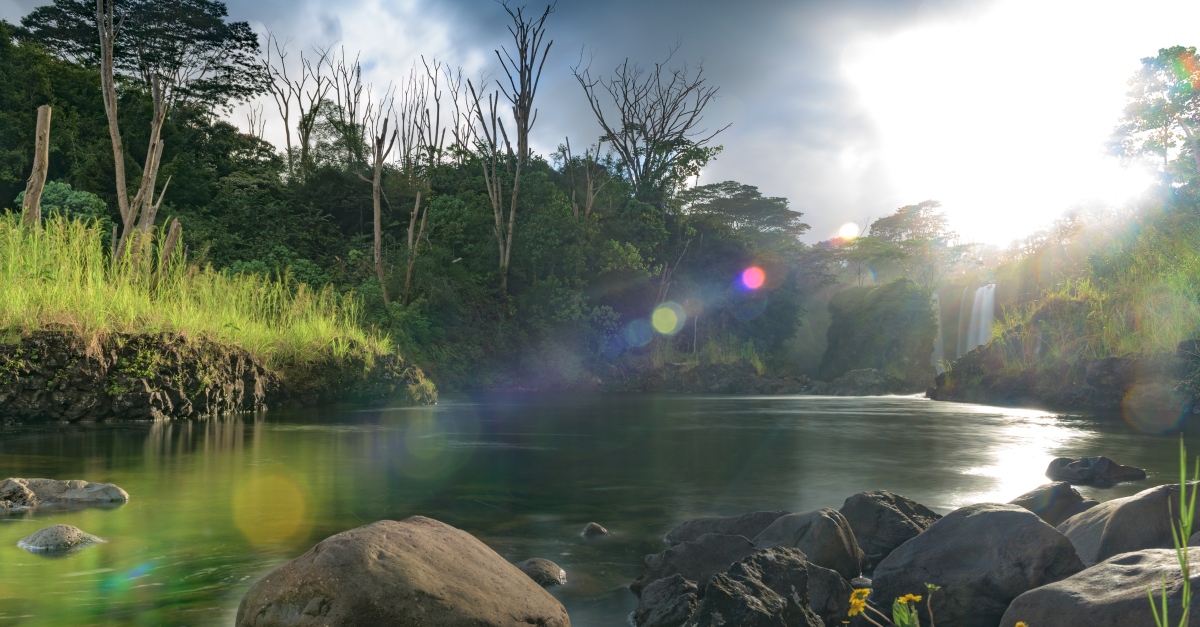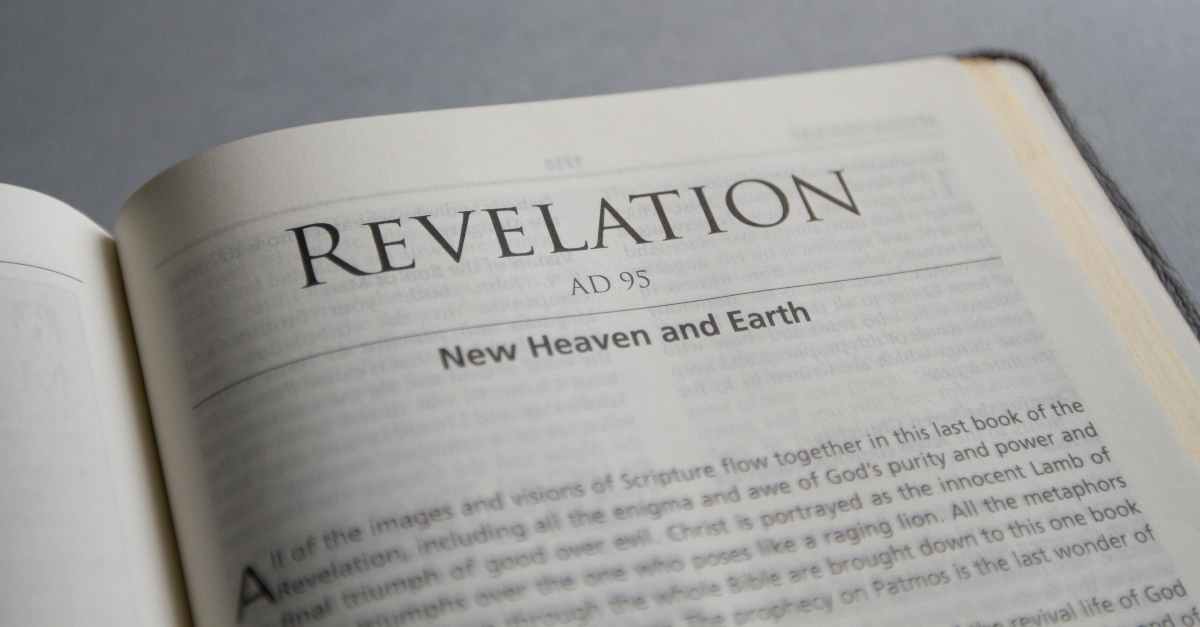And the Lord God planted a garden in Eden, in the east, and there he put the man whom he had formed. – Gen. 2:8
In the opening pages of Scripture, we find a garden - the Garden of Eden - planted by God himself and inhabited by the first human beings.
The Garden of Eden not only introduces us to God’s first interactions with mankind, his most special creation, but it also sets the stage for a grand redemptive arc that stretches throughout Scripture and ends in the closing pages of the book of Revelation.
What Does ‘Garden of Eden’ Mean?
The Hebrew word, Eden, is connected to the concept of “delight” or “happiness.” Even today, The story of the Garden of Eden has made the term synonymous with paradise, bliss, and perfection. Although some scholars believe that Eden is a mythological or allegorical concept meant to convey the origin of creation, it appears that the biblical author was referring to a literal geographic location, due to the very specific descriptors of its surroundings.
Does Genesis Give Clues as to Where this Garden Was Located?
In Genesis 2:10-14, we read that “a river flowed out of Eden to water the garden, and there it divided and became four rivers”: the Pishon, the Gihon, the Tigris, and the Euphrates. These verses mention lands and geographical features surrounding these four rivers flowing out of the Garden of Eden.
Although you probably aren’t familiar with the Pishon and Gihon river, chances are you have heard of the Tigris and Euphrates, because these two rivers still exist today! Even if the rivers don’t follow the same course they did in the book of Genesis, the regions mentioned in connection with the rivers indicate that the Garden of Eden was most likely located somewhere in “fertile crescent” of Mesopotamia, or modern-day Iraq, Kuwait, and Syria (from: Geisler, N. L. (1999). Eden, Garden Of. In Baker encyclopedia of Christian apologetics (pp. 208–209). Grand Rapids, MI: Baker Books).
What Happened in the Garden of Eden Story in the Bible?
After God planted the Garden of Eden, a place filled with every variation of fruit imaginable (Gen. 2:9), he placed Adam there to “work it and keep it” (Gen. 2:15) and gave him only one command: “You may surely eat of every tree of the garden, but of the tree of the knowledge of good and evil you shall not eat, for in the day that you eat of it you shall surely die” (Gen. 2:16-17). The Bible never says why God placed this specific tree in the garden or how it gave the knowledge of good and evil, but one thing is clear: it was not meant for Adam to eat from.
As the Genesis account continues, God creates the first woman from the side of Adam so that he could have a “helper fit for him” (Gen. 2:20). Adam and Eve enjoyed a sinless environment filled with perfect beauty and a personal relationship with their Creator. Here, in the Garden of Eden, everything was perfect. That is, until Genesis 3 when Satan (in the form of a serpent) approached Eve and challenged the one command that God had given him.
Through his deceit, Eve ate from the Tree of the Knowledge of Good and Evil while Adam passively looked on and ultimately partook as well.
The Bible says that their eyes were opened and they were immediately ashamed. Although they once enjoyed perfect fellowship with God, they now found themselves hiding from him. Because of their rebellion, God “drove out the man, and at the east of the garden of Eden he placed the cherubim and a flaming sword that turned every way to guard the way to the tree of life” (Gen 3:24).
Eden had been lost and humanity had been plunged into the curse of sin.
 Photo Credit: ©GettyImages/Eachat
Photo Credit: ©GettyImages/Eachat
How the Garden of Eden Account Relates to our Salvation
The story that began in Eden doesn’t end in Genesis 3. This garden, in fact, sets the stage for God’s cosmic plan of redemption.
In Genesis 2 and 3, we see the goodness of creation and a perfect relationship between God and man, only to have the curse of sin plunge, not only mankind, but all of creation into futility and decay.
Following the fall of Adam and Eve, we see sin taint everything. As we flip through the pages of our Bibles, we read of betrayal, murder, hatred, and enmity—mankind in rebellion against their creator. In addition, creation itself is placed under the curse.
In Genesis 3 God declares to Adam: “cursed is the ground because of you” (Gen 3:17). God’s good creation, exemplified by the beautiful garden of Eden, began to groan.
But it is at this moment that the stage is set for God’s grand plan of redemption—to restore that which had been lost by the curse of sin. In Genesis 3:15, God points toward a future hope. To the serpent, God said, “I will put enmity between you and the woman, and between your offspring and her offspring; he shall bruise your head, and you shall bruise his heel.”
Although sin had entered the world, God points toward a future redeemer, who would ultimately crush the head of the serpent, defeating death forever.
The Anticipated Redeemer to Crush the Serpent
The rest of the Old Testament continues to set the stage for this Redeemer, anticipating his arrival. In the opening pages of the New Testament, we meet Jesus Christ, God in flesh. Luke 3:23-38 traces the human genealogy through Joseph’s line. At the end of this genealogy, we find a connection to the garden. The final links in the genealogical chain end with “the son of Enos, the son of Seth, the son of Adam, the son of God” (v. 38). Here we see the connection to the garden. Here we find the seed who would crush the head of the serpent and restore all things (Hebrews 2:14-15).
Through Jesus’s death, burial, and resurrection: salvation and redemption are offered to all, and the guarantee of future restoration is established. Jesus Christ, the second Adam, had come to undo what was done in Genesis 3.
 Photo Credit: ©Sparrowstock
Photo Credit: ©Sparrowstock
A Vision of the Ultimate Restoration of Creation
But the story doesn’t end with Jesus’s victory over the grave. There’s more to the story. Although salvation from sin has been provided by Christ, the restoration of creation is yet to happen.
Romans 8:20-23 describes this beautifully: “For the creation was subjected to futility, not willingly, but because of him who subjected it, in hope that the creation itself will be set free from its bondage to corruption and obtain the freedom of the glory of the children of God. For we know that the whole creation has been groaning together in the pains of childbirth until now. And not only the creation, but we ourselves, who have the firstfruits of the Spirit, groan inwardly as we wait eagerly for the adoptions as sons, the redemption of our bodies.”
The garden is yet to be restored. But as we turn to the final chapters of the Bible, we see the end of the story—the conclusion of the grand arc of redemption that began in the first 3 chapters of Genesis. In Revelation 21, the Apostle John is given a vision of God’s plan for the future: “Then I saw a new heaven and a new earth, for the first heaven and the first earth had passed away” (v. 1).
The goodness of creation that was lost in the garden of Eden will be restored.
Verses 3-4 continue: “And I heard a loud voice from the throne saying, ‘Behold, the dwelling place of God is with man. He will dwell with them, and they will be his people…He will wipe away every tear from their eyes, and death shall be no more, neither shall there be mourning, nor crying, nor pain anymore, for the former things have passed away.”
The perfect relationship between God and man that was lost in the garden of Eden will be restored.
In verse 5 we read these comforting thoughts from Jesus himself: “And he who was seated on the throne said, ‘Behold, I am making all things new.’”
The garden will be restored.
The New Garden
Remember the river that ran through Eden? Remember the tree in the midst of the garden? Now, look at the words in Revelation 22:1-3—the end of the story: “Then the angel showed me the river of the water of life, bright as crystal, flowing from the throne of God and of the Lamb through the middle of the street of the city;, also, on either side of the river, the tree of life with its twelve kinds of fruit, yielding its fruit each month. The leaves of the tree were for the healing of the nations. No longer will there be anything accursed.”
The garden will be restored. What was made wrong will soon be made right. Everything will be made new.
Concluding Thoughts
Today, we find ourselves between two gardens. The curse of sin is all around us. We see the wickedness of others and the wickedness of our own hearts. We see the decay of creation and the chaos around us. But in all this confusion, let us take comfort in the fact that the story hasn’t finished yet.
God is on the throne and he will one day execute perfect judgment on sin. He will one day restore all things. And those who believe in Jesus Christ can enjoy, once again, a perfect relationship with the creator of the universe.
One day, God’s creation will surpass the beauty of that first garden nestled in ancient Mesopotamia. All things will be made new. In the words of Romans 8:23, Although now we may “groan inwardly,” let us “wait eagerly” for that day.
Recommended for You:
10 Things You Should Know about the Garden of Eden
What Is the Significance of the Forbidden Fruit in Genesis 2?
What Is the Significance of the Fall of Man in the Garden of Eden?
Photo Credit: ©GettyImages/kevron2001
 Aaron Berry is a co-author for the Pursuing the Pursuer Blog. You can read more articles from Aaron and his colleagues by subscribing to their blog or following them on Facebook, Twitter, and Instagram. Aaron currently resides in Allen Park, MI with his wife and two children, where he serves in his local church and recently completed an MDiv degree at Detroit Baptist Theological Seminary.
Aaron Berry is a co-author for the Pursuing the Pursuer Blog. You can read more articles from Aaron and his colleagues by subscribing to their blog or following them on Facebook, Twitter, and Instagram. Aaron currently resides in Allen Park, MI with his wife and two children, where he serves in his local church and recently completed an MDiv degree at Detroit Baptist Theological Seminary.